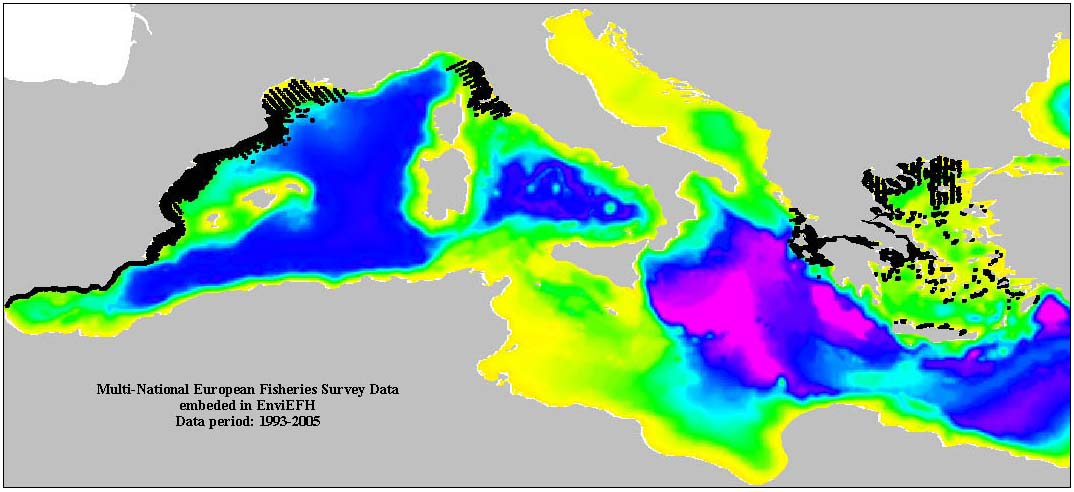7. Catalan Coast (SP): The Catalan coast lies on the north-western region of the Western Mediterranean Sea, to the south of the Gulf of Lions. The shelf is quite narrow except in the southern part of the area, in front of the Ebro River Delta. The northern area is characterised by the presence of submarine canyons approaching to within few miles of the coast. The region is affected by a permanent density front separating the less saline shelf waters from the more saline open sea waters. In association to this front, the Liguro-Provencal current flows in a SW direction along the continental slope. The shelf is subject to high spatial and temporal variability due to inputs of continental runoff, mainly from the Rhone River in the northern Gulf of Lions and the Ebro River. The area supports pelagic and demersal fisheries.
Some of the GIS-processed environmental data (satellite imagery) and bathymetry grid for the study sites above include:
Sea surface temperature (SST) Source: DLR-EOWEB, Germany
Temperature/Salinity climatologies in various depths (TC/SC) Source: NOAA-NESDIS-NODC, USA
Sea Surface Chlorophyll-a (Chl-a) Source: NASA-OceanColorWEB, USA
Sea surface salinity (SAL) Source: IRI-LDEO-CDL, USA
Photosynthetically active radiation (PAR) Source: NASA OceanColor WEB, USA
Sea Surface Altimetry (ALT) Source: CNES-CLS-Aviso, France
Wind Speed and Direction Source: RS Systems, USA
Mediterranean Bathymetry Source: General Bathymetric Chart of the Oceans (GEBCO)
Example of fisheries surveyed data in Greece, Spain and France embeded as initial input in EFH mapping:




